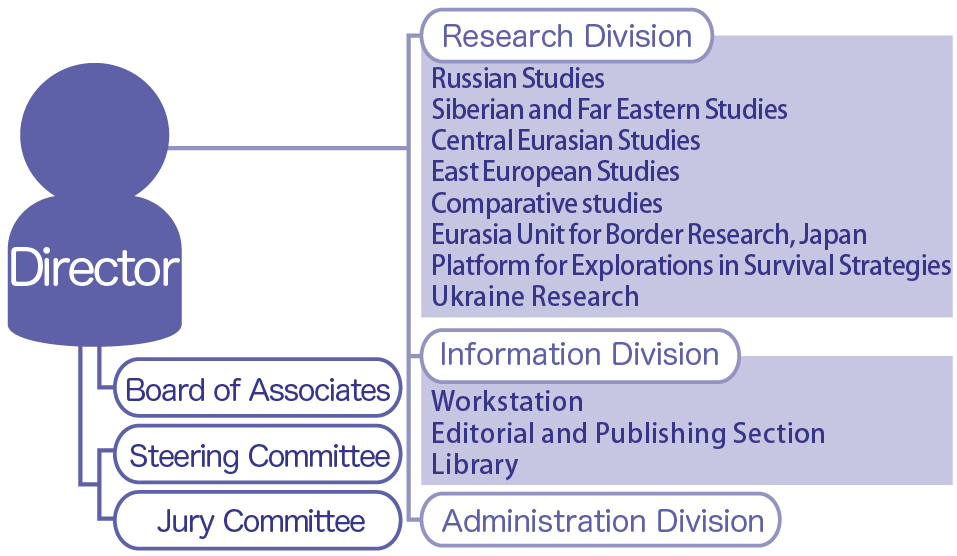About the SRC
Outline
History / Organization
F
oundation
The Slavic Research Center's history goes back to June 24, 1953, when a coordinating body of researchers on Slavic studies was created at Hokkaido University. The body was officially recognized as part of the Faculty of Law on July 1, 1955 and named the Slavic Institute as the only institution for general Slavic regional studies in Japan. On April 1, 1978, the Institute acquired independent status within the University and was given a new name, the “Slavic Research Center (SRC)”.
F
urther Development
On June 7, 1990, the SRC was officially recognized as the national collaborating institution for Slavic studies. From 1995 to 2001, the SRC was designated a "Center of Excellence (COE)" by the Ministry of Education and Science, and the Priority Research Project (1995-1997) "Changes in the Slavic-Eurasian World" was initiated. Since 2000, the SRC has provided graduate programs in Slavic area studies for MA and PhD students at the Graduate School of Letters. Furthermore, long-scale projects such as the 21st Century COE Program “Making a Discipline of Slavic Eurasian Studies” (2003-2007), International Training Programs (2008-2012), the Scientific Research on Innovation Areas “Comparative Research on Major Regional Powers in Eurasia” (2008-2012), and the Global COE Program “Reshaping Japan’s Border Studies” (2009-2013) were adopted, keeping the SRC at the forefront of Slavic Eurasian studies in Japan and in the world.
O
rganization 
S
upervisory Organization
The SRC is administered by a university-based Board of Associates and a national Board of Directors. The former, composed of SRC staff and concerned members of Hokkaido University, functions as a faculty assembly, deliberating on the Center's administrative policy, budget, organization, and other significant matters. The latter includes professors outside Hokkaido University and discusses the Center's activities as the national collaborating institution. After the SRC acquires its new status (Joint Usage/Research Center) in 2010, the Board of Directors will be reorganized into the Steering Committee and Jury Committee. The former will deliberate on the SRC's activities as a joint usage/research center, while the latter will judge related applications. More than half of the members of both committees are selected from outside Hokkaido University.
R
esearch Division
The SRC consists of three divisions: Research; Information; and Administration. The Research Division is composed of five sections: Russian Studies; Siberian and Far Eastern Studies; Central Eurasian Studies; East European Studies; and Comparative Studies. Each section flexibly organizes interdisciplinary and comprehensive studies. The Research Division has both Japanese and foreign visiting professors, in addition to permanent staff. Every year, six Japanese visiting professors are selected from among applicants from other universities and institutes. Foreign visiting scholars are also chosen each year from a pool of more than 50 applicants from all over the world. They stay at the SRC and participate in joint projects and conferences. Further, approximately 150 research fellows are associated with the SRC and conduct joint research projects with the permanent staff.
I
nformation and Administrative Divisions
The Information Division collects research materials, provides publication and information services, and assists with research activities. The Administrative Division manages finances, performs other administrative duties, and supports the Center's everyday activities with careful attention.
